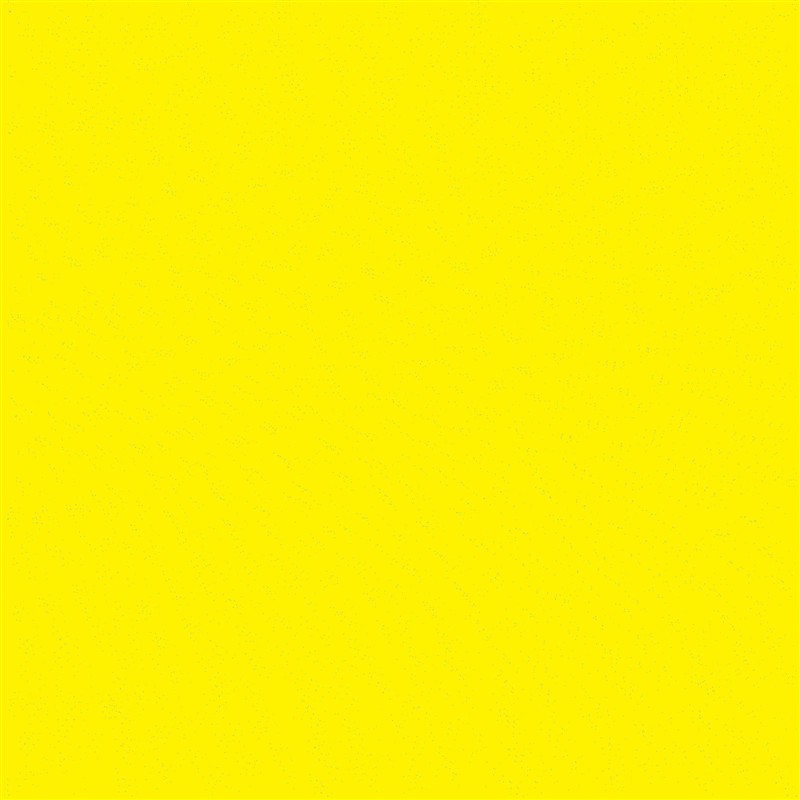|
| Yeah, definitely a new style of spraying that needs to figure itself out a tidbit.
For a drone for pre-emerge kind of stuff where you might be labeled into spraying a lot coarser, make sure it has an aerial/drone label as well. With a rotary atomizer the coverage starts looking crazy rough when you are getting into a like 350-400 micron size as ALL of the droplets end up being that size.
So, sounds like a good idea to have droplet consistency, but the huge issue is that for a flat fan nozzle, it'll produce tons of different droplet size, some small and some larger. (To which some of those droplets are driftable which is bad) But in terms of coverage over complex plants/coverage, you need those different size droplets and the smaller ones to get coverage. So, we are pretty much ensuring we don't put all the eggs in one basket.
To break it down more visually, consider a single 250 micron size droplet gives you one drop on a plant. IF you split that droplet size in half, into a handful of 125 micron size droplets, there would be 8 droplets of that size. (Just due to the volume of the droplet). So, effectively you have 8 chances for half-coverage (since the droplet hitting the leaf would be covering only 125microns) if your droplets are half the size. So, my main concern with the rotary atomizers is that you pretty much cannot get absolutely solid coverage for (most) of the products we are using in broadacre farming, if your droplet size is getting into the like 400-500micron size droplet.
Literally just now I tried to see if ChatGPT could do some math for me, and was surprised it actually did it without even blinking!.
So, I was thinking how many droplets are ACTUALLY within 2 gallons/acre in a square foot of coverage, so I asked Chat GPT how many volume of water is in 2 gal/acre in a square foot (so just 2 / 43550), and then how many 400 micron size droplets would be within that volume in a square foot.
So, turns out in a 1 square foot, and if the droplets were ~400 microns, you'd have a max of 437 droplets in that square foot. As a rough idea, a 400 micron size droplet is about the size of 4 hair widths. Because I was curious, I just put this on a 12"x 12" scaled square and threw in ~430 droplets and spread it across, and you can see what I mean. IF coverage was sprayed consistently and droplets stayed the same size and hit target, it'd be something like the firstpicture.
I figured I might as well actually just do the same thing to see where coverage might be 'satisfactory' for what we might expect. Take a look through the 400 micron size images and see where you figure you'd want coverage to look like. Again, its a 12" x 12" square, so visualize what a few weeds might look like in that space.
I might have gotten a bit carried away as usually droplet sizes aren't consistent, so I could simply model it pretty darn simply given a relatively consistent dispersal, assuming 100% of the droplets hit the sheet.
So a few images for your perusal, which should probably take your notice if you do end up going with the T40 so you can get the jist of where you might want to set your droplet size.
400 micron size droplets with rotary atomizer at the following volumes (still in the same 12" x 12" square foot):
2GPA, 4GPA, 6GPA, 10GPA, 20GPA
200 micron size droplets with rotary atomizer at the following volumes (still in the same 12" x 12" square foot):
I limited the volume sizes in this one sheerly because of the computing power it took to make them. Ha! For the 2.5GPA minute it probably took a full 10 minutes to actually have it do its thing and compile it all into a single distributed volume. For the 5GPA one, there might be some of the droplets overlapping eachother (not that it doesn't happen that way in real life), so might technically have the same distribution of the other ones.
DRIFT NOTE: and this is a very big note. This 200 micron size version assumes every droplet makes its way and hits target. Generally for a droplet size of that size, a huge portion of the spray will be qualified as driftable fines, so it is NOT hitting the target you want. In broadcast spraying, this might mean it is striked as a 'miss', even if it moves off-target 5ft or 50ft or 500ft. The whole point is we know it doesn't hit what we intend it to, so it might be less effective volume.
EVAPORATION NOTE: Honestly, I played around with ChatGPT just now to actually get the jist of 'how long does it take for a 200 micron size droplet to evaporate', as if pretty much 100% of your spray volume is 200µ its a pretty big deal. Again, evaporation depends on a few factors (wind speed, temp, humidity) as well as active ingredients of the chemical.
Assuming water, in 20°C /70F temps at 60% humidity, while the spray is actually moving in a ~12kph wind (or 12kph drone speed for example with very little wind), a single 200µ droplet might evaporate in ~33 seconds. Once it hits the plant/target, if there is no wind speed anymore, the length of time will vary.
Assuming water, in 10°C /50F weather at 60% humidity, with 0 wind (e.g. hit the plant and now in the shade), that same droplet (if it hasn't fully evaporated already, might evaporate closer to 223 seconds.
So, that is the reason we are wary of spraying such a fine spray when you are getting consistent droplet size from a rotary atomizer. If we lose half of the spray to off-target drift (which most will evaporate too) and then another significant part to evaporation before the active ingredients are actually doing what they need to do, it stacks against the finer application. Again, to reaffirm, I would have bias as we manufacture flat fan nozzles, but rotary atomizers are super cool and they do have some hiccups but there are sure as heck applications that can be 100% better than a flat fan nozzle type, but I don't see a ton of the fit in what I'd call 'regular broadcast' spray applications.
For custom stuff that is restricted or not intended to spray the entire field, or high value veggie crops or fields that can't be accessed or can't be trampled, drones are going to be a pretty darn big deal. Once the whole efficiency/logistics/etc of the same swarm kind of drone spraying comes more into broadcast situations, it'll be a different game too.
Until then, there will be a pretty steep learning curve for guys getting set up with drones, especially with CDA/atomizers being used that probably hadn't been used in broadcast spraying much over the last 30 years. A good sprayer applicator has a good eye for wind conditions, changing spray directions, knowing when to shut down (because they are literally in the sprayer able to see if relatively closely), but a good drone applicator has a much more technical job with critical failure if not done properly due to having to adjust and be absolutely aware of swath width, overlap between swaths with a VERY variable swath offset due to the wind pretty much every second you are flying, so I'd always want to be a fair bit more conservative on how I am spraying, but I am a spraying guy first and a drone guy second. Naturally, there are a lot of the sales folks for the technologies that are a 'drone guy' first, and a 'sprayer guy' second, so just be wary of things that might sound too good to be true. The drones seem relatively cheap, but its probably a pretty $40K bill that is one 'oops' away from being a catastrophe (or hurting someone), very similar to aerial applicators needing constant vigilance while applying. (But probably harder as you are probably just in eye-shot of the drone trying to keep an eye on everything)
Anyways, figured there'd be a few different ways to at least visualize what a T40 with rotary might be able to do before you spend the time and cost.
I have a tendency for maybe going a bit 'long' in my posts (Ha!), so feel free to ask any questions if I skimmed over something might have missed something in the post.
-Lucas
 (0.75GPA_200micron_Consistent Droplet Size Cards_12INx12IN (full).jpg) (0.75GPA_200micron_Consistent Droplet Size Cards_12INx12IN (full).jpg)
 (1.25GPA_200micron_Consistent Droplet Size Cards_12INx12IN (full).jpg) (1.25GPA_200micron_Consistent Droplet Size Cards_12INx12IN (full).jpg)
 (2.5GPA_200micron_Consistent Droplet Size Cards_12INx12IN (full).jpg) (2.5GPA_200micron_Consistent Droplet Size Cards_12INx12IN (full).jpg)
 (2GPA_400microns_Consistent Droplet Size Cards_12INx12IN (full).jpg) (2GPA_400microns_Consistent Droplet Size Cards_12INx12IN (full).jpg)
 (4GPA_400microns_Consistent Droplet Size Cards_12INx12IN (full).jpg) (4GPA_400microns_Consistent Droplet Size Cards_12INx12IN (full).jpg)
 (5GPA_200microns_Consistent Droplet Size Cards_12INx12IN (full).jpg) (5GPA_200microns_Consistent Droplet Size Cards_12INx12IN (full).jpg)
 (6GPA_400microns_Consistent Droplet Size Cards_12INx12IN (full).jpg) (6GPA_400microns_Consistent Droplet Size Cards_12INx12IN (full).jpg)
 (10GPA_microns_Consistent Droplet Size Cards_12INx12IN (full).jpg) (10GPA_microns_Consistent Droplet Size Cards_12INx12IN (full).jpg)
 (20GPA_400microns_Consistent Droplet Size Cards_12INx12IN (full).jpg) (20GPA_400microns_Consistent Droplet Size Cards_12INx12IN (full).jpg)
Attachments
----------------
 0.75GPA_200micron_Consistent Droplet Size Cards_12INx12IN (full).jpg (24KB - 209 downloads) 0.75GPA_200micron_Consistent Droplet Size Cards_12INx12IN (full).jpg (24KB - 209 downloads)
 1.25GPA_200micron_Consistent Droplet Size Cards_12INx12IN (full).jpg (29KB - 190 downloads) 1.25GPA_200micron_Consistent Droplet Size Cards_12INx12IN (full).jpg (29KB - 190 downloads)
 2.5GPA_200micron_Consistent Droplet Size Cards_12INx12IN (full).jpg (38KB - 184 downloads) 2.5GPA_200micron_Consistent Droplet Size Cards_12INx12IN (full).jpg (38KB - 184 downloads)
 2GPA_400microns_Consistent Droplet Size Cards_12INx12IN (full).jpg (25KB - 216 downloads) 2GPA_400microns_Consistent Droplet Size Cards_12INx12IN (full).jpg (25KB - 216 downloads)
 4GPA_400microns_Consistent Droplet Size Cards_12INx12IN (full).jpg (36KB - 202 downloads) 4GPA_400microns_Consistent Droplet Size Cards_12INx12IN (full).jpg (36KB - 202 downloads)
 5GPA_200microns_Consistent Droplet Size Cards_12INx12IN (full).jpg (56KB - 202 downloads) 5GPA_200microns_Consistent Droplet Size Cards_12INx12IN (full).jpg (56KB - 202 downloads)
 6GPA_400microns_Consistent Droplet Size Cards_12INx12IN (full).jpg (54KB - 198 downloads) 6GPA_400microns_Consistent Droplet Size Cards_12INx12IN (full).jpg (54KB - 198 downloads)
 10GPA_microns_Consistent Droplet Size Cards_12INx12IN (full).jpg (68KB - 191 downloads) 10GPA_microns_Consistent Droplet Size Cards_12INx12IN (full).jpg (68KB - 191 downloads)
 20GPA_400microns_Consistent Droplet Size Cards_12INx12IN (full).jpg (110KB - 200 downloads) 20GPA_400microns_Consistent Droplet Size Cards_12INx12IN (full).jpg (110KB - 200 downloads)
| |
|


 Dji T40
Dji T40